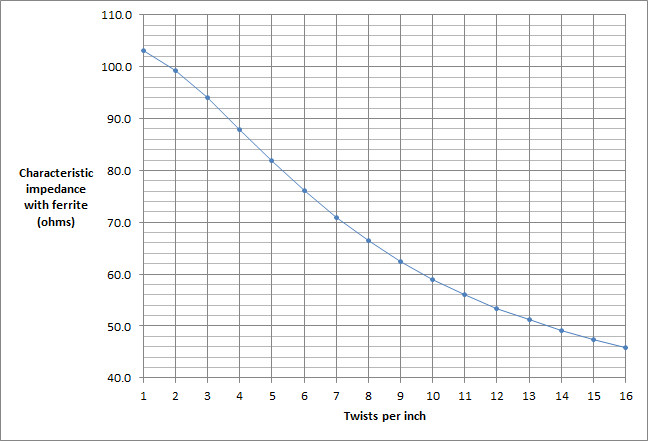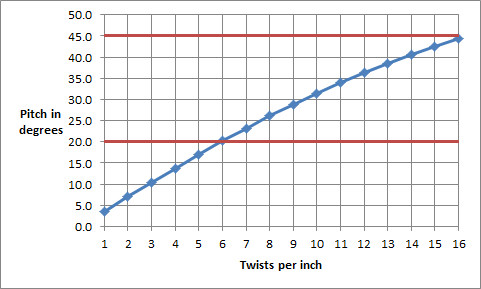Since the steps were too much, this excel file was created. In the spreadsheet, the green values can be entered, and it will calculate the characteristic impedance, and the twists per inch for a given twist pitch angle. It will also display a graph of the impedance vs twists. For the earlier kynar wire example, the graph is shown here. Note: all this is theoretical, and needs someone with the appropriate equipment to try it out and measure it.
Since the pitch angle should ideally be between 20 and 45 degrees, it can be seen that 6-16 twists per inch is acceptable:
This means that the range of about 46 ohms to 76 ohms can be achieved with this wire. (As a sidenote, if 100 ohms was required, then Ethernet cable could be stripped and used, since the wire pairs have a characteristic impedance of about 100 ohms).
Going back to the earlier point about Kynar having a variable dielectric constant over frequency, that could be useful for situations where the impedance to be matched also changes over frequency. So, it is worth checking the characteristic impedance at the frequencies of 1MHz and 100MHz, and it turns out that the impedance change is about 4 ohms. Basically 4 ohms increase as the frequency is increased from 1MHz to 100MHz.

